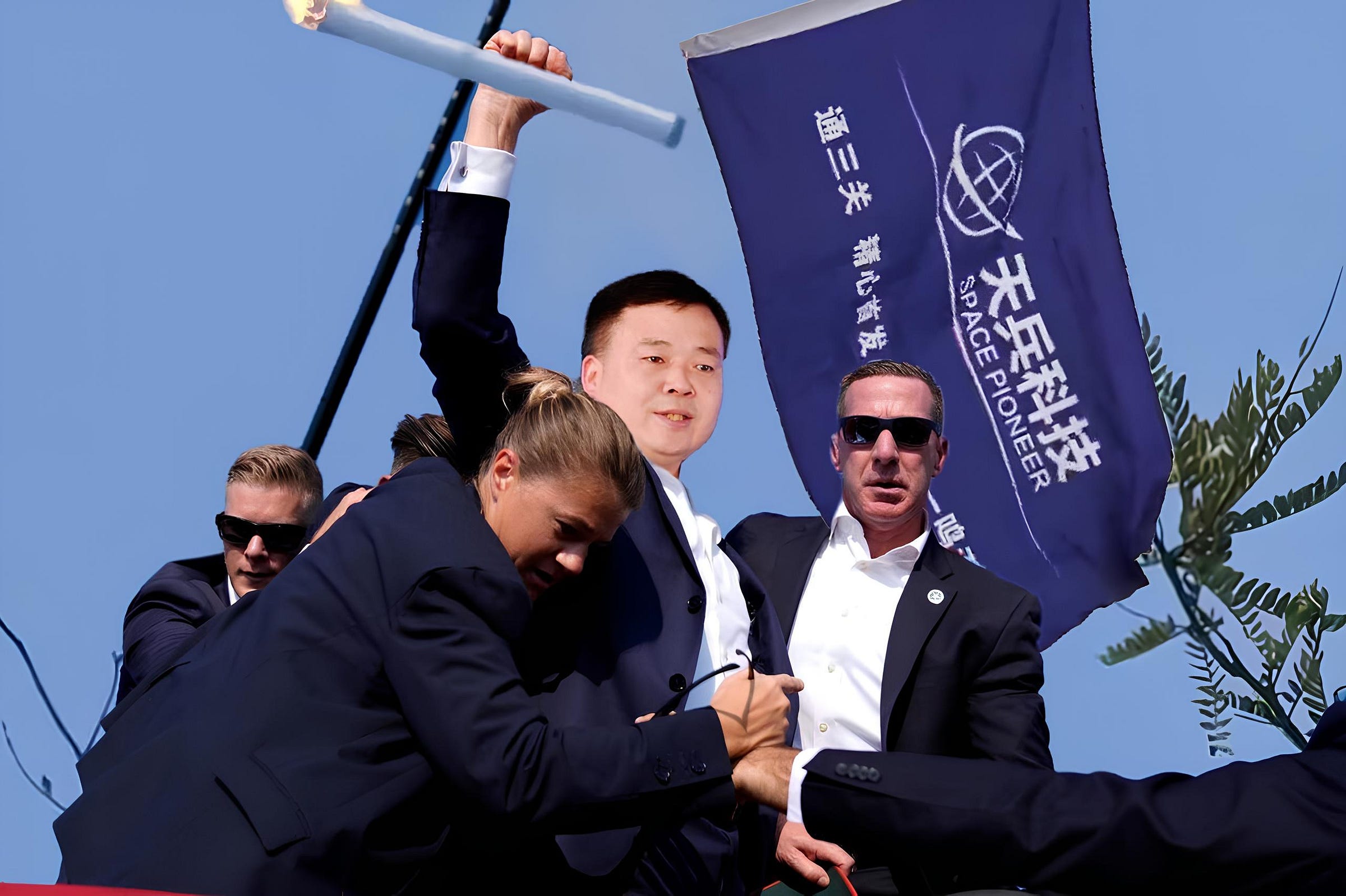Space Pioneer is back?
"Somehow Space Pioneer returned"

Five months ago, Space Pioneer was propelled into international notoriety following a not-very-static static fire of its Tianlong-3 launch vehicle's first-stage.
Tianlong-3’s static fire had the first-stage ignite all nine of its TH-12 engines before quickly liberating itself into the air. It remained airborne for approximately fifty seconds before crashing into a mountainside and exploding its remaining propellant (consisting of kerosene and liquid oxygen). Thankfully, due to a preestablished exclusion zone and evacuations, no one was harmed or killed.
Since the incident in June, Space Pioneer has remained quiet through its official channels, except for sharing celebratory artwork for the Mid-Autumn Festival (中秋节) and China’s National Day (国庆节).
Despite this, in July the company was performing tests of the launch vehicle erector at a port in eastern China, using an inert pathfinder. A few months later, Kang Yonglai (康永来), Space Pioneer’s Founder and Chairman, reportedly led a team from Space Pioneer, on November 6th, to learn more about industrial planning and development in the Guizhou Shuanglong Airport Economic Zone (贵州双龙航空港经济区). Three weeks later on November 26th, activity was spotted at Space Pioneer’s Gongyi facility, where the company tested engines and performed the “static” fire in June. Ground-side propellant tanks are also believed to have been shipped to Space Pioneer in recent months, likely bound for their Jiuquan launch pad.
In a turn of good luck for Kang Yonglai since the incident, he was named in Forbes China’s New Era of Disruptive Founders due to the success of Tianlong-2 and contributions to the development of China’s commercial space sector.
It remains unknown how or when Space Pioneer will publically resume progress on Tianlong-3, despite the possibility of two launches in 2024. Part of the reason for the company’s silence is rumored to be related to some investors no longer wanting association with the company and legal battles relating to the June incident.
Stronger legislation regarding possibly energetic space hardware testing is said to be on the way, the closest thing to a response from the Central Government response was released on July 4th via Xinhua, with a short translated summary as follows:
“Safety is the lifeline of enterprise development. Whether it is a traditional industry or a high-tech industry such as commercial aerospace, safety must be given priority. However, the process of climbing to the peak of the science and technology innovation industry cannot be smooth all the way. It is inevitable that there will be failures or even failures, and opportunities must be given to learn lessons and correct mistakes.” — “All industries are prosperous and safety comes first. Rocket power system testing is accompanied by considerable uncertainties and risks. Before the test, the company involved had activated the emergency response mechanism in advance, carried out safety control, and organized the evacuation of surrounding personnel in advance.” — “This series of measures alleviated the safety anxiety of surrounding residents and the public.” — “China's commercial aerospace has been developing for nearly 10 years. The rapid development of the industry will inevitably expose some problems. We might as well take this accident as an opportunity to conduct a comprehensive "Physical examination". Adhering to the main tone of encouraging innovation, steadily solving existing problems in the industry, and improving and standardizing professional assessment and approval systems will help prevent safety accidents and guide commercial aerospace to develop better and faster.”
If there are any problems with this translation please reach out and correct me.
What caused the un-static fire in June?
Based on imagery of the stand afterward, views of the stage during flight, and patents for the stand, it is likely that Space Pioneer did not accurately account for the weight of the rocket and the total potential thrust, given that it lifted off mere seconds after ignition. The stand itself was rated to hold down a vehicle producing up to 600 tons of thrust, Tianlong-3’s first stage was producing 820 tons of thrust.
Space Pioneer has said that the rocket broke free due to a structural failure, but did not say what part of the stand or vehicle. Based on images of the aftermath and during the production of the vehicle, it appears that the part of the engine section where hold-down bolts were attached ripped apart from the rest of the vehicle upon it reaching a high enough thrust. The connections to the stand at the base of the stage are also the only structural connections that were planned to keep it in place.
A more in-depth article about the static fire was written in the days following the incident and can be found here.
About Space Pioneer
Space Pioneer (天兵科技), also known as Beijing Tianbing Technology Co Ltd (北京天兵科技有限公司), was founded in 2019 by Kang Yonglai (康永来) to develop reusable liquid fuelled launch vehicles. To date, the company has raised 4 billion Yuan, approximately 552 million United States Dollars, through fifteen funding rounds.
So far the company has flown once, intentionally, for Tianlong-2’s debut flight back in April 2023, delivering a single satellite to sun-synchronous orbit. Since then all efforts have been in developing the partially reusable Tianlong-3. Depending on events beyond Space Pioneer’s control, Tianlong-3 may fly its proper debut flight in 2025.



